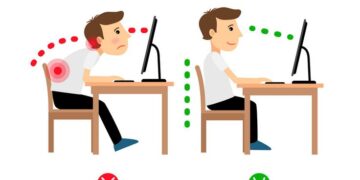There’s no question that menstrual hygiene is important. Poor menstrual hygiene can lead to a number of health problems, including genital infection, UTI, and even cervical cancer. In this article, we’ll discuss the importance of menstrual hygiene and give you tips on how to keep your health top-notch during your periods.
What is Menstrual Hygiene?
Menstrual hygiene refers to the practice of cleansing yourself and your surrounding area before, during, and after your period.
Menstrual hygiene is an important aspect of women’s health. It is important to understand the different types of menstrual hygiene products and how to use them properly.
1: What Are Menstrual Hygiene Products?
Understanding menstrual hygiene is an essential part of maintaining a healthy lifestyle for women. Menstrual hygiene products are designed to provide comfort and protection from the physical and emotional effects of menstruation. These products include pads, tampons, menstrual cups and even period panties. Pads and tampons absorb menstrual fluid and help to keep the genital area clean and dry. Menstrual cups are made of medical-grade silicone and are inserted into the vagina to collect menstrual fluid. Period panties are made of moisture-wicking fabric and provide an additional layer of protection against leaks.
It is important to choose the right menstrual hygiene product for your individual needs. Different products offer different levels of protection and comfort, so it is important to consider factors such as the amount of menstrual flow, activity level, and personal preference. Additionally, it is important to practice good menstrual hygiene by changing tampons or pads regularly, emptying menstrual cups regularly, and washing period panties after each use. Doing so can reduce the risk of infection and other menstrual disorders.
Women’s health is an important topic, and it is essential to understand the importance of menstrual hygiene in maintaining a healthy lifestyle. By understanding the different types of menstrual hygiene products available, women can find the best solution for their individual needs.
2: Types of Menstrual Hygiene Products
When it comes to choosing the right menstrual hygiene product for your needs, it is important to be aware of the different types of products that are available. Feminine hygiene products can be divided into two main categories: absorbent and non-absorbent. Absorbent products, such as tampons, sanitary pads, and menstrual cups, are designed to absorb menstrual fluid and keep it away from the body. Non-absorbent products, such as panty liners and period panties, provide a barrier of protection between the body and clothing. By using the right product for your menstrual needs, you can help prevent or alleviate common menstrual disorders such as endometriosis and pelvic inflammatory disease. Tampons are a popular choice for many women due to their convenience and discretion. Sanitary pads are another common choice, with disposable pads being the most popular option. Menstrual cups provide up to 12 hours of protection and are an excellent reusable option. Panty liners provide protection against light spotting and period panties are a great option for those suffering from heavier flow. Ultimately, the best menstrual hygiene product for you depends on your individual needs and preferences.
3: How To Use Menstrual Hygiene Products Properly
Menstrual hygiene is an important part of women’s health and wellbeing, but many women are unaware of the correct way to use menstrual hygiene products. It is essential to use the right products in order to maintain good menstrual health and avoid any potential menstrual disorders. To ensure proper use, here are some tips. First, make sure you are using the right product for your specific needs. For example, if you have a heavy flow, consider using a tampon with a higher absorbency level. Second, make sure you change your product regularly throughout the day – tampons should be replaced every 4-8 hours, while pads should be changed every 2-3 hours. Third, wash your hands before and after changing your menstrual hygiene product. Doing so will help avoid any potential infections or irritation. Finally, dispose of your product properly by wrapping it up in toilet paper before disposing into the waste bin. Following these steps can help ensure proper use of menstrual hygiene products and maintain good menstrual health.
7: Menstrual Disorders
Menstrual disorders affect many women around the world and can have a significant impact on their lives. It is important to be aware of the signs and symptoms of menstrual disorders, as well as the treatments available. Common menstrual disorders include heavy bleeding, irregular cycles, amenorrhea, painful periods, and premenstrual dysphoric disorder. Heavy bleeding can cause extreme fatigue, anemia, and cramping. Irregular cycles can cause unpredictable and uncomfortable symptoms. Amenorrhea is the absence of periods for three or more months and is usually due to a hormonal imbalance. Painful periods are typically caused by uterine cramps and can be accompanied by nausea, vomiting, or diarrhea. Premenstrual dysphoric disorder (PMDD) is a severe form of premenstrual syndrome that can cause intense physical and emotional symptoms in the days leading up to menstruation. Treatment for menstrual disorders may include lifestyle changes, such as exercising regularly and eating a balanced diet, or medical interventions such as hormonal therapy or medications. Adequate feminine hygiene is also key to maintaining good menstrual health. If you are experiencing any of the signs or symptoms described above, it is important to speak with your doctor to discuss diagnosis and treatment options.
Conclusion
Menstrual hygiene is an important part of women’s health and wellbeing, and it is essential to use the right products for your specific needs. Following these tips can help ensure proper use of menstrual hygiene products and maintain good menstrual health.






























